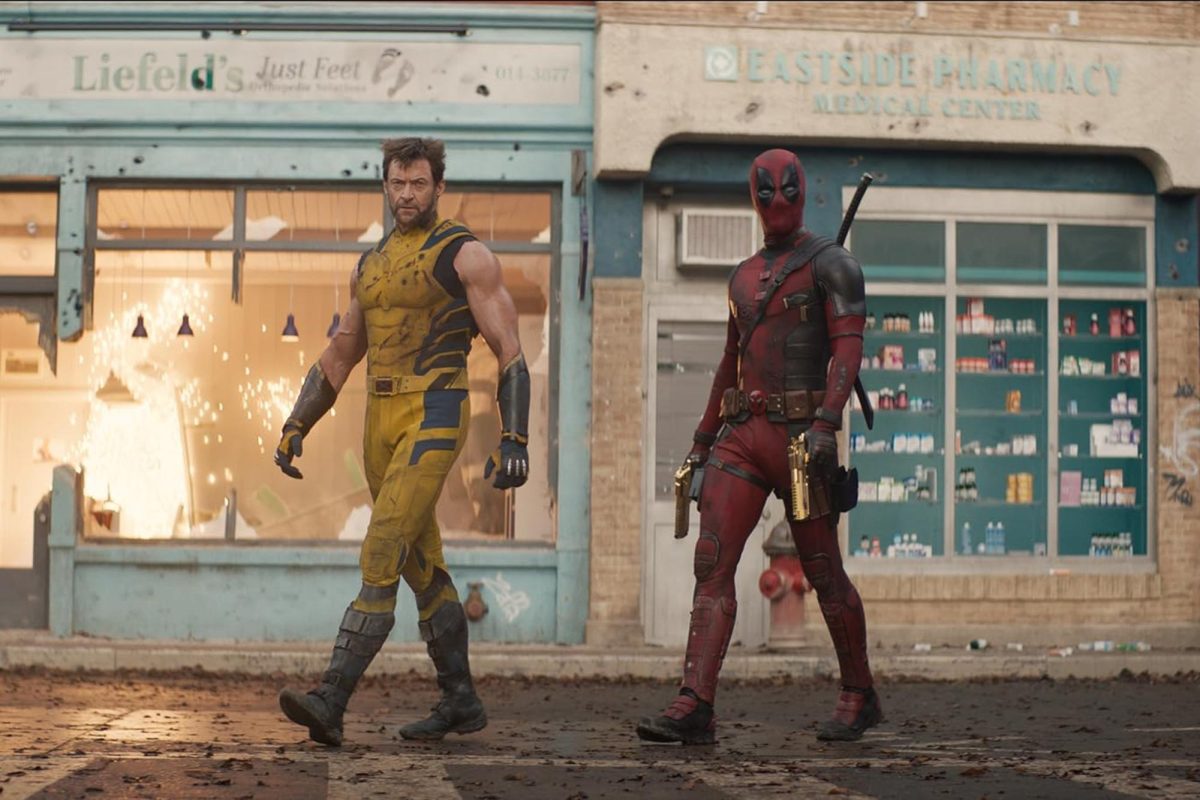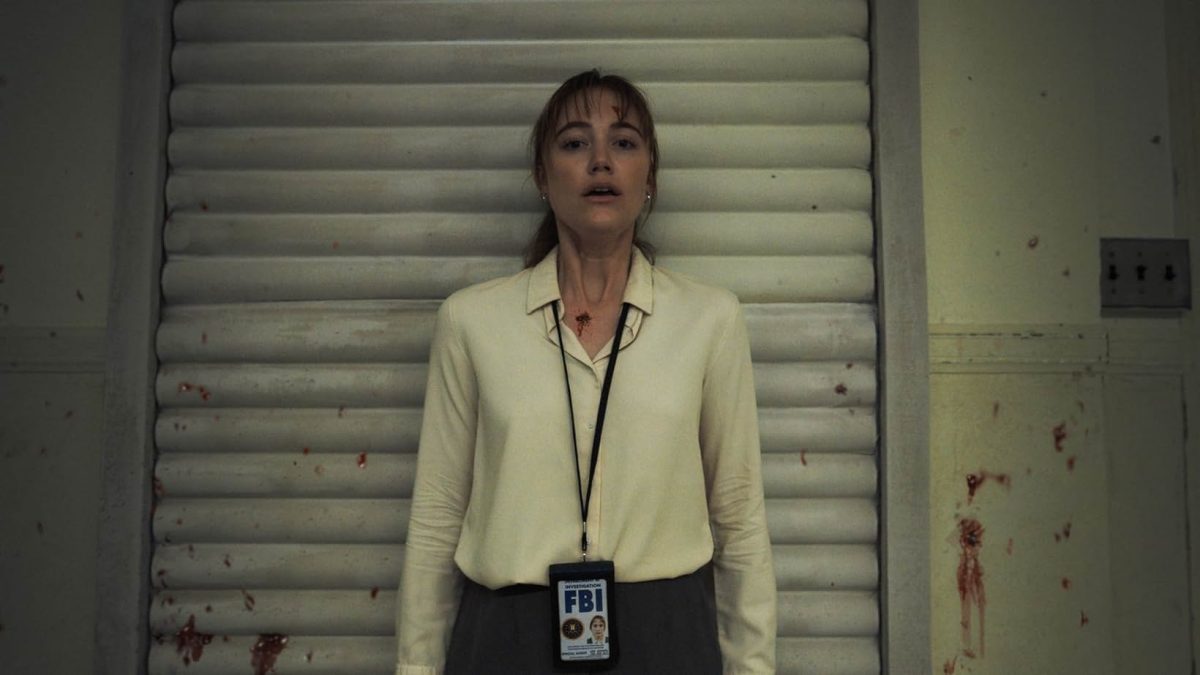Twenty-five years ago, on Oct. 16, 1998, “Kuch Kuch Hota Hai” was released.
In his autobiography, writer-director Karan Johar recounts the story of him pitching what would ultimately become “Kuch Kuch Hota Hai” to star Shah Rukh Khan.
Compelled by an image of a father and a daughter living together after the childʼs mother died in childbirth, Johar narrates a scene early on in the film. The daughter is at a speech competition where she must make a one-minute-long impromptu presentation about a topic drawn at random.
Yet upon drawing the word “mother,” she is taken aback, stammering and stumbling. It is then when the father comes up and, in front of the crowd, tells the daughter what a mother should be and how he is trying to be that for her.
Khan, teary-eyed, agrees to do the film. And at that moment, “Kuch Kuch Hota Hai” was born.
Get The Daily Illini in your inbox!
In many ways, that scene Johar recalls is emblematic of the film as a whole; blunt and melodramatic in construction — but even so, it is hard to not be overcome by the wave of palpable emotions that bind it together.
Looking back on the film 25 years later, those sentiments ring even truer. At the time of its release in 1998, the movie was undoubtedly a phenomenon. Though in the many years since, its legacy has only grown cementing itself not only as a cultural fixture, but as a totemic work of popular Bollywood filmmaking.
The film opens with Tina Malhotra (Rani Mukherji) on her deathbed. With internal bleeding due to complications during childbirth, she writes eight letters for her daughter to be given to her each year on her birthday. Saying goodbye to her husband Rahul Khanna (Shah Rukh Khan), she asks Rahul to name their daughter Anjali.
Flashing forward eight years, Anjali (Sana Saaed) is about to turn 8 years old. She finds that, for her eighth letter, her mom tells the story of how she met Rahul in college and Rahul’s relationship with Anjali Sharma (Kajol).
The film then cuts to their college days. Anjali and Rahul are best friends, playful yet close. When Tina, the daughter of the principal, arrives, Rahul finds himself slowly falling in love with her, to the anguish of Anjali, who secretly loves Rahul.
When Rahul finally decides to declare his love for Tina, Anjali decides to leave the college and the two of them lose touch. Tina and Rahul get married, though Tina feels a slight regret as she feels she might have interfered between Anjali and Rahul.
As such, she ends her letter with a simple wish. Find Anjali and reunite Rahul with her such that Rahul can once again be happy. Though Anjali is engaged to Aman (Salman Khan), the daughter sneaks off to a summer camp where Anjali Sharma is counseling in the hopes Rahul will come and the two can realize their love for each other.
The film would ultimately launch Mukherji into stardom. In casting the movie, the role of Tina was the hardest to fill. Mukherji, coming off of a movie with superstar Aamir Khan, was still relatively unknown. But Aditya Chopra, who Johar worked with in making 1995’s sensation “Dilwale Dulhania Le Jayenge,” suggested her for the part and she went on to embody the role like it was made for her.
There was a genuine excitement in seeing Shah Rukh Khan and Kajol reunite on screen. Coming off of the aforementioned “Dilwale Dulhania Le Jayenge,” their friendship with Johar on that movie’s set paved the way for them to ultimately star in this debut feature.
Though not the focus of this retrospective, it is hard to overstate just how much of a genuine cultural movement “Dilwale Dulhania Le Jayenge” was upon its release. And in large part “Kuch Kuch Hota Hai” exists in conversation with that film.
Certainly, centering the cast on Khan and Kajol again lent the film an immediate credit within the changing landscape of Bollywood film, though the inherent uniqueness in Johar’s vision in contrast to Chopra’s make the two films an interesting pair that, in many ways, defined the language of mainstream Bollywood filmmaking of the early 2000s.
The performances are as good as one could expect from the star cast. Much of the movie’s romantic performances rest on Kajol, and she does a fantastic job playing the contrast between a young girl with a broken heart and someone caught between her feelings and her duty.
Khan, for his part, brings all the wiry charm and beaming emotion that made him maybe the biggest Bollywood star of all time. His portrayal of the young Rahul, often abrasive and irritating in his singular focus to exude this “too cool for school” energy, has received increased attention in recent years due to questions regarding if the performance sends a negative message to young men.
Attention on this subject became significant enough that Johar himself said that he does not want Rahul to be perceived as a role model.
However, it can be argued that the movie is aware of Rahul’s contradictions, and that a large part of his journey is gaining the maturity needed to reject those fallacies that once drove his actions. Nevertheless, the way the film approaches this idea is at the expense of its female characters.
It is also worth mentioning how so much of this era of Bollywood filmmaking was inherently built upon foundations of regressive gender stereotypes. To this day, there persists a dominance of masculinity that promotes male-centered perspectives while excluding or diluting the female side of those stories.
Nothing in “Kuch Kuch Hota Hai” is small. Each camera movememt, each musical cue, each dialogue and each expression are all played to the absolute most they could possibly be. At times it can be exhausting, especially given the film’s towering 185-minute runtime.
Yet it exudes a certain confidence as well. Confidence is perfectly reflected in the film’s iconic gazebo sequence in which Rahul and Anjali, drenched from the pouring rain, find refuge in a gazebo. Rahul offers Anjali a dance to which Anjali responds that there is no music. In almost a manifestation of the inner emotions of the characters, Rahul conjures up the film’s main theme, to which the pair dance.
Almost entirely wordless, the short sequence conveys so much through the movement of the character’s bodies paired against Johar’s fluid camera. Decades of love, longing, loss, grief and lust build to a melodic explosion as the characters, seemingly for the first time, acknowledge just how much they love each other. However, the moment is cut short, as Anjali realizes her commitment to Aman.
The sequence is magnificent, reiterating why Shah Rukh Khan and Kajol make such a compelling cinematic pair while also serving as a singularly virtuosic moment for Johar. Among the many iconic moments produced by their collaborations, this one is undoubtedly one of the most remembered.
“Kuch Kuch Hota Hai” also serves as a turning point in its portrayal of an increasingly globalized India. St. Xavier’s college, where much of the film’s first half takes place, is visually defined as an integration of Western design into traditionally Indian aesthetics.
The characters all wear bright, simple, bubblegum neon outfits while the sets exude this almost storybook charm largely rooted in how it feels like an amalgamation of a traditionally Hollywood college set within an Indian setting.
This makes for a movie that is distinctly of its era, though every design choice ultimately underscores the hyperpop energy that flows through much of the film’s first half. Johar specifically notes how much the characterization of the college setting was inspired by “The Archies,” and it is hard not to see that influence baked into every frame.
The distinctive look of the movie also adds to that influence. Lights are often blown out and glowing and the variety of color gives it this pulpy look that feels as if you are watching some sort of serial or comic come to life.
This increased focus on a more globalized culture may also be a reason why the film connects so well for Indian audiences across the globe. Johar has become one of the central filmmakers for the Indian diaspora with so many of his later works both as a director and producer becoming touchstones for a new generation of Indian audiences who were born and raised overseas.
The aesthetics of the movie are paired nicely with the film’s soundtrack. An undeniable album, it is quite possibly one of the best among Johar’s filmography. Composed by Jatin-Lalit, each song on the album is brimming with energy and melody.
Much like many of Johar’s early albums, each song overstays its welcome ever so slightly with Johar’s attempts to weave narrative and ancillary character moments into the fabric of the vocals, only making them feel more stretched out than they need to be.
The title track, “Kuch Kuch Hota Hai,” is a song in the complete Bollywood ideal. Shot in Scotland, the visual language of the song is defined by sweeping helicopter shots, characters dancing around in ornate scenery and emotive motion. Against backgrounds of castles, green hills and blue skies, the vocals feel augmented by the inherent grandeur of the scenery.
Additional songs such as “Yeh Ladka Hai Deewana” and “Ladki Badi Anjaani Hai” offer an up-beat if familiarly breezy vibe while depicting Anjali and Rahul’s relationship at two stages of their life — best friends in college and reconnecting almost a decade later.
However, it’s “Koi Mil Gaya,” a song that plays upon Tina’s arrival at St. Xavier’s, that is the best in the film. A burst of energy, the song’s electric blend of dance, lighting, camera-work, guitar and motion make for an experience that is so propulsive while also showing a crucial point for Rahul as he becomes closer to Tina at the expense of his relationship to Anjali.
As a love story, the film works in spades. It is certainly designed as such, and still remains one of the most accessible and engaging of Khan and Kajol’s careers.
Khan’s role as a father makes this film especially resonate so deeply so many years later. That special relationship between parent and child would go on to become the defining thematic throughline of Johar’s entire filmography. Here, those emotions seem to be bubbling so strongly, with the dynamic between Rahul and his daughter serving as both the narrative and emotional spine of the entire film.
The idea that the father is led to his own happiness because of his daughter with both of them reaching an emotional catharsis along the way, remains universal and powerful.
It’s why, referring to Johar’s autobiography again, I was so struck reading Johar’s father’s reaction to seeing the film for the first time. “My father just broke down,” Johar said. “We had never seen him like this, weeping like a baby.”
“It’s the best film in the world,” Johar’s father said. “My son has made the best film in the world.”







